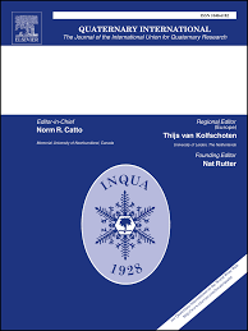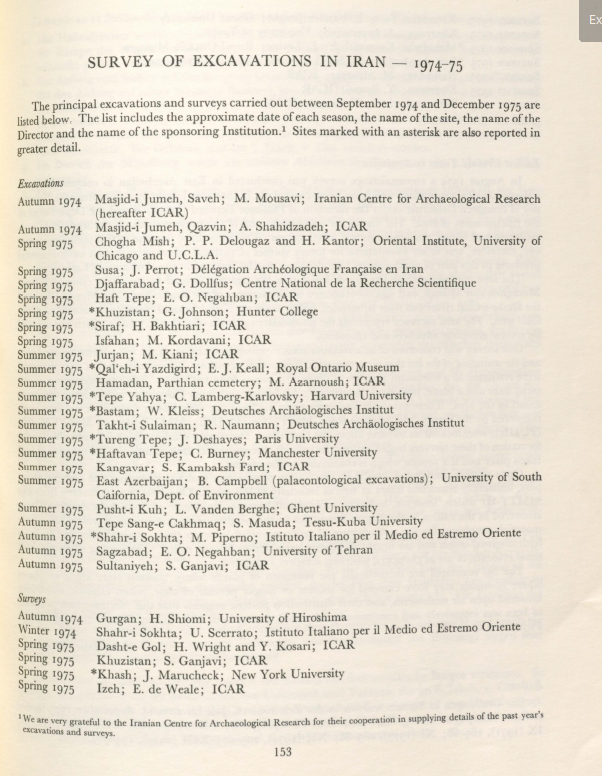Publications so far
0
| 1. |  | Maziar, Sepideh: Geographical Proximity and Material Culture; The Interplay Between Syunik and the Southern Part of the Araxes River Basin in the 6th to the 3rd Millennium BC. In: Quaternary International, iss. 579, pp. 42-58, 2021. (Type: Journal Article | Abstract | Links | BibTeX)@article{nokey,The region that is known today as Syunik in the south/southeastern part of Armenia is geographically a close neighbour of the southern part of the Araxes river basin in today Iran. Political upheavals and boundaries hindered fieldwork in these areas for many years. The archaeological project of the Araxes valley (APAV) is one of many other projects that launched in 2013 in this region and focused on the southern basin of the Araxes River. The results of the excavations of two sites, Kohne Pasgah Tepesi and Kohne Tepesi, and the intensive survey carried out in this area, enable us to shed more light on the settlement dynamics, material culture and economic/social networks of this area and its neighbours. The period from the 6th up to the middle part of the 4th millennium BC represents the Neolithic and Chalcolithic periods in this region. The material culture of both periods shares many common characteristics with contemporary traditions at sites of the southern Caucasus. Later, in the last part of the 4th millennium BC, a cultural tradition that originated in the southern Caucasus, known as the Kura-Araxes cultural tradition, expanded over a vast area, including the southern part of the Araxes river basin. Based on the study of the pottery styles and obsidian flow, the patterns of interconnection between regions, communities, and sources, and commodity flows are examined. The role of the Araxes River and its tributaries in this interplay over the stated time span is the other inquiry of this article. Furthermore, I will investigate whether spatial propinquity had any impact on commodity flows and exchange, and if so, did this impact affected the material culture and technological practices or not. |
| 2. | Salvatori, Sandro: A Brief Surface Survey of the Protohistoric Site of Shahdad (Kerman, Iran). In: Estratto da Rivista di Archeologia, pp. 5-9, 1982. (Type: Journal Article | Links | BibTeX)@article{nokey, | |
| 3. |  | Sadex-Kooros, Hind; Kleiss, Wolfram; McBurney, Charles; Lippert, Andreas; Levine, Louis D.; Keall, E. J.; Berghe, Louis Vanden; Marucheck, Judith T.; Bakhtiari, H.; Tosi, Maurizio; Deshayes, Jean; Johnson, Gregory A.; Lamberg-Karlovsky, C. C.; Beale, Thomas Wight; Prickett, M. E.: Survey of Excavations in Iran 1974-75. In: Journal of Persian Studies, pp. 153-176, 1975. (Type: Journal Article | Links | BibTeX)@article{nokey, |
| 4. |  | Bulgarelli, Grazia M.: Tepe Hisar. Preliminary Report on a Surfrace Survey, Aug. 1972. In: East and West, vol. 24, no. 1-2, pp. 15-27, 1974. (Type: Journal Article | Links | BibTeX)@article{nokey, |
2021 |
|
 | Maziar, Sepideh: Geographical Proximity and Material Culture; The Interplay Between Syunik and the Southern Part of the Araxes River Basin in the 6th to the 3rd Millennium BC. In: Quaternary International, iss. 579, pp. 42-58, 2021. (Type: Journal Article | Abstract | Links | BibTeX | Tags: Bronze Age, Chalcolithic, Economy, Kura-Araxes, Neolithic, Settlement mobility, Social, social relations, Survey)@article{nokey,The region that is known today as Syunik in the south/southeastern part of Armenia is geographically a close neighbour of the southern part of the Araxes river basin in today Iran. Political upheavals and boundaries hindered fieldwork in these areas for many years. The archaeological project of the Araxes valley (APAV) is one of many other projects that launched in 2013 in this region and focused on the southern basin of the Araxes River. The results of the excavations of two sites, Kohne Pasgah Tepesi and Kohne Tepesi, and the intensive survey carried out in this area, enable us to shed more light on the settlement dynamics, material culture and economic/social networks of this area and its neighbours. The period from the 6th up to the middle part of the 4th millennium BC represents the Neolithic and Chalcolithic periods in this region. The material culture of both periods shares many common characteristics with contemporary traditions at sites of the southern Caucasus. Later, in the last part of the 4th millennium BC, a cultural tradition that originated in the southern Caucasus, known as the Kura-Araxes cultural tradition, expanded over a vast area, including the southern part of the Araxes river basin. Based on the study of the pottery styles and obsidian flow, the patterns of interconnection between regions, communities, and sources, and commodity flows are examined. The role of the Araxes River and its tributaries in this interplay over the stated time span is the other inquiry of this article. Furthermore, I will investigate whether spatial propinquity had any impact on commodity flows and exchange, and if so, did this impact affected the material culture and technological practices or not. |
1982 |
|
Salvatori, Sandro: A Brief Surface Survey of the Protohistoric Site of Shahdad (Kerman, Iran). In: Estratto da Rivista di Archeologia, pp. 5-9, 1982. (Type: Journal Article | Links | BibTeX | Tags: Survey)@article{nokey, | |
1975 |
|
 | Sadex-Kooros, Hind; Kleiss, Wolfram; McBurney, Charles; Lippert, Andreas; Levine, Louis D.; Keall, E. J.; Berghe, Louis Vanden; Marucheck, Judith T.; Bakhtiari, H.; Tosi, Maurizio; Deshayes, Jean; Johnson, Gregory A.; Lamberg-Karlovsky, C. C.; Beale, Thomas Wight; Prickett, M. E.: Survey of Excavations in Iran 1974-75. In: Journal of Persian Studies, pp. 153-176, 1975. (Type: Journal Article | Links | BibTeX | Tags: Survey)@article{nokey, |
1974 |
|
 | Bulgarelli, Grazia M.: Tepe Hisar. Preliminary Report on a Surfrace Survey, Aug. 1972. In: East and West, vol. 24, no. 1-2, pp. 15-27, 1974. (Type: Journal Article | Links | BibTeX | Tags: Bronze Age, Chalcolithic, Semnan, Survey)@article{nokey, |
